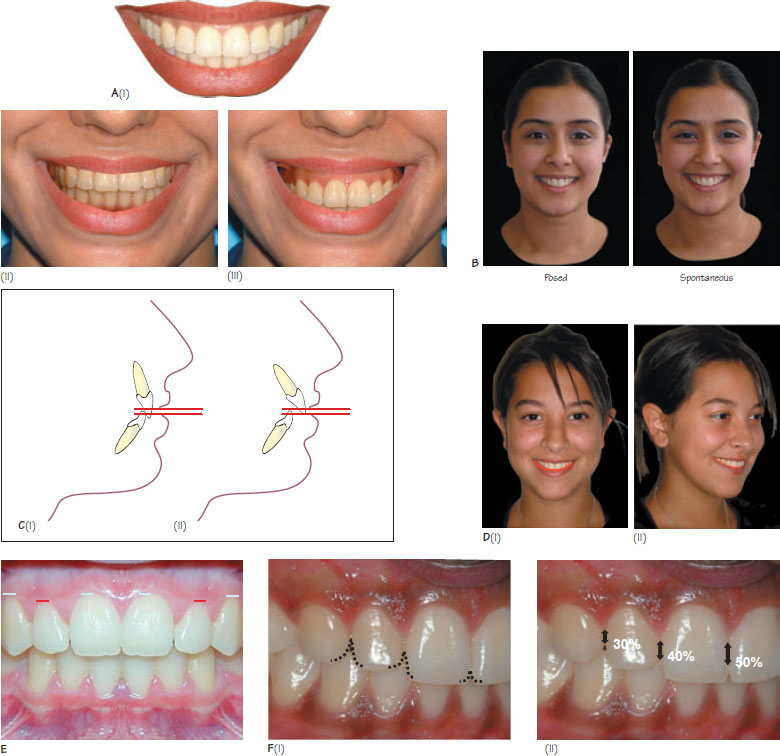17
Smile analysis
Figure 17.1 (A) (i) Normal lip line, (ii) low lip line and (iii) high lip line. (B) Posed and spontaneous smiles. Greater facial movements are required for the generation of the spontaneous smile which produces greater upper lip elevation and tooth/gingival exposure. (C) Proclination of the maxillary incisors results in a reduction of tooth display at rest and during smiling. Retroclination will have the opposite effect. (D) The smile arc is shown in red. (E) The ideal relationship of the anterior maxillary gingival margins. (F) the ideal (i) embrasure and (ii) connector relationship.

Most patients seek orthodontic treatment to improve their smile aesthetics. With modern orthodontic and restorative techniques, it is possible to improve the appearance of the smile, assuming its individual components are understood. Knowledge of these components is also important for informed consent, as any anatomical limitations in achieving ideal aesthetics should be explained before commencing treatment. This chapter discusses the important components of a smile.
The lip line
The lip line is the vertical relationship between the upper lip and the maxillary incisors during smiling. Ideally, the full length of the upper incisors and the interdental papillae should be visible during smiling. The lip line is high when a continuous band of gingival tissue is visible and low when less than 75% of the crown height of the central incisors can be seen (Figure 17.1A). The lip line in females is 1–2 mm higher than in males so it is acceptable for females to show 1–2 mm of gingivae anteriorly during smiling.
Many factors influence the lip line and amount of incisor display during rest and smiling:
Stay updated, free dental videos. Join our Telegram channel

VIDEdental - Online dental courses


